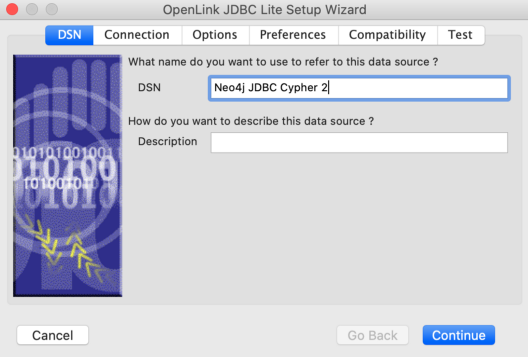
- #Microsoft jdbc driver performance drivers
- #Microsoft jdbc driver performance update
- #Microsoft jdbc driver performance driver
- #Microsoft jdbc driver performance download
In the following example, an open connection to the sample database is passed in to the function, the addBatch method is used to create the statements to be executed, and the executeBatch method is called to submit the batch to the database. This will reduce network traffic and additionally enhance the performance of your application.Īs an example, create the following table in the sample database: CREATE TABLE TestTable
#Microsoft jdbc driver performance update
If you do not have to use update counts, you can first issue a SET NOCOUNT ON statement to SQL Server. However, if a command has a syntax error, the statements in the batch fail.
#Microsoft jdbc driver performance driver
If a command fails, the driver continues processing the remaining commands. If one of the commands fails, a BatchUpdateException is thrown, and you should use the getUpdateCounts method of the BatchUpdateException class to retrieve the update count array. DbSchema Tool already includes an Sqlite driver, which is. Usually, they are provided by the same company which implemented the Sqlite software.

jar used by all Java applications to connect to the database.
#Microsoft jdbc driver performance drivers
Posted: (3 days ago) JDBC drivers are Java library files with the extension.
#Microsoft jdbc driver performance download
The executeBatch method returns an array of int values that correspond to the update count of each command. Download Sqlite JDBC Driver Connect to Sqlite Best Online Courses From Courses.

Only Data Definition Language (DDL) and Data Manipulation Language (DML) statements that return a simple update count can be run as part of a batch. The executeBatch method is used to submit all commands for processing. Large Object) - BLOB Microsoft SQL Server Express Edition Microsoft JDBC Driver for. The clearBatch method is used to clear the list of commands. You can improve the performance of the query by using with clause. The addBatch method is used to add a command. Microsoft and Sybase products support data linking to any source for free. The SQLServerStatement, SQLServerPreparedStatement, and SQLServerCallableStatement classes can all be used to submit batch updates. UnityJDBC provides quick and easy multi-source SQL querying including MongoDB. When I run the corresponding query on the remote server's Microsoft SQL Server Management Studio, it returns approx. Reading – (v=sql.110).aspx you will see- “ For optimal performance with CHAR, VARCHAR or LONGVARCHAR type of non-Unicode parameters, set the sendStringParametersAsUnicode connection string property to “false” and use the non-national character methods.To improve performance when multiple updates to a SQL Server database are occurring, the Microsoft JDBC Driver for SQL Server provides the ability to submit multiple updates as a single unit of work, also referred to as a batch. I am dealing with what is apparently a performance issue while retrieving a relatively large ResultSet from a remote Microsoft SQL Server 2012 to a Java client that uses Microsoft JDBC Driver 4.0. The parameter name and value to be set might vary from driver to driver, depending on the vendor. This can be corrected by resetting one of the default parameter in the Java driver. This would ultimately lead to a whole table scan during data fetch, thereby slowing down the search queries drastically. Moreover, if an index exists on the non-unicode column, it will be ignored.

SQL Server tries to convert non-unicode datatypes implicitly in the table to unicode datatypes before doing the comparison. But, in cases where the data types of the columns do not support Unicode, serious performance issues arise especially during data fetches. In the case where the data types of the columns support Unicode, everything is smooth. This change eliminates unnecessary temporal datatype conversions by eliminating the use of wherever possible. By default, all Microsoft’s JDBC drivers send the strings in Unicode format to the SQL Server, irrespective of whether the datatype of the corresponding column defined in the SQL Server supports Unicode or not. Microsoft JDBC Driver 8.2 for SQL Server has improved performance when retrieving temporal datatypes from SQL Server. For example, the character data types that support Unicode are nchar, nvarchar, longnvarchar where as their ASCII counter parts are char, varchar and longvarchar respectively. we will using JDBC batch operation and optimize the performance. If you are using pure JDBC and not using the high performance journal then you are. While troubleshooting JDBC client apps that connect to SQL SErver I ran into this issue few times, latest very recently.Īs you may already know well, SQL Server differentiates its data types that support Unicode from the ones that just support ASCII. Default depends on the JDBC driver Microsoft JDBC Driver for SQL Server version 9.


 0 kommentar(er)
0 kommentar(er)
